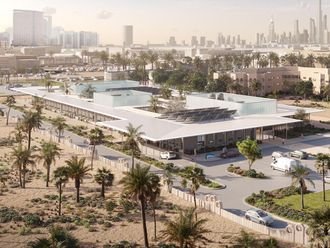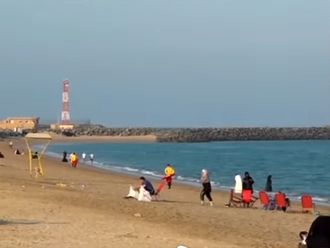Dubai: Saving water or electricity at home can be challenging when appliances or household goods are not labeled adequately.
To make it easier, a Dubai-based company, InterfaceFLOR has launched a "Let' Be Clear" campaign across the Middle East to show their customers just what goes into their products.
As a manufacturer of environmentally responsible floor coverings, InterfaceFLOR made a pledge in the 1990s to eliminate its impact on the environment by 2020, called Mission Zero, and aims to be a fully sustainable company by 2020.
THe Ministry of Environment and Water is hosting a conference on Clean Production with LG November 8 called Greenomics, where InterfaceFLOR will discuss their environmental model.
The company, which specializes in floor coverings, is urging businesses to achieve complete transparency by 2012 and for consumers to demand an Environmental Product Declaration (EPD) on all products – from carpet tiles to building materials, household goods to clothes – so they can compare the environmental impact of different products. An EPD reports the exact ingredients and environmental footprint of a product.
Lindsey Parnell, president and chief executive officer of InterfaceFLOR Europe, Middle East, Africa and India said there is great pressure on companies to demonstrate that they are part of the solution rather than the problem.
"Carpet may seem an unlikely test-bed for sustainability, but in fact the commercial carpet tile marketplace has become more aware of sustainability issues than most others," he said.
A guide, Just The Facts, is available to download free of charge from the InterfaceFLOR website, and explains how to assess the sustainability of different products and the companies which make them.
One of the features in the guide is a glossary of "greenwashing" terms which outlines the differences between carbon neutral, fair-trade, organic and environmentally-friendly.
"Green-washing is prevalent in this market; it is mainly used as a marketing tool to boost the reputation of a product without significant investment by the company to actually make their products or services better for the environment," said Steve Pratt, Gulf Regional Manager for InterfaceFLOR and Secretary of the Emirates Green Building Council.
"This trend has appeared in the last two years and it is one of the goals of the EGBC to provide clear information to the construction industry on how to understand green claims. An example of green-washing is a local manufacturer of interior finishing products marketing their products as suitable for the LEED rating tool and claiming to have the required industry standard green label, but when asked, they are not able to produce a copy of the certification nor even the certificate number."
Earlier this year, InterfaceFLOR became the first carpet tile manufacturer in Europe to receive an EDP for a range of its carpet tiles.
Greenwash glossary
Carbon offset
The controversial concept of paying others to reduce their carbon emissions to balance your emissions. Find out which project you'll be supporting and beware of double counting.
Carbon neutral
Offsetting precisely as much carbon as you emit. The scope of operations covered by the claim is a critical factor – is the whole life-cycle of the product covered or just its manufacture?
Carbon negative
Offsetting more carbon than you emit. Sounds saintly but owes more to marketing than science.
Low carbon
Meaningless without numbers. How low is low?
Environmentally or eco-friendly / Kind to the environment / In tune with nature, etc
General and vague statements that mean nothing specific are almost all misleading without explanation attached. You may see flowers but you should smell a rat.
Free from X, Y or Z
Only valid when the product concerned would be expected to contain material X, Y or Z and that material is environmentally harmful.
Natural
Gives a nice warm feeling inside? Just because something's natural doesn't necessarily mean it's more sustainable. It may seem counterintuitive, but some natural products actually have a higher environmental impact than their synthetic counterparts.
Source: InterfaceFLOR












